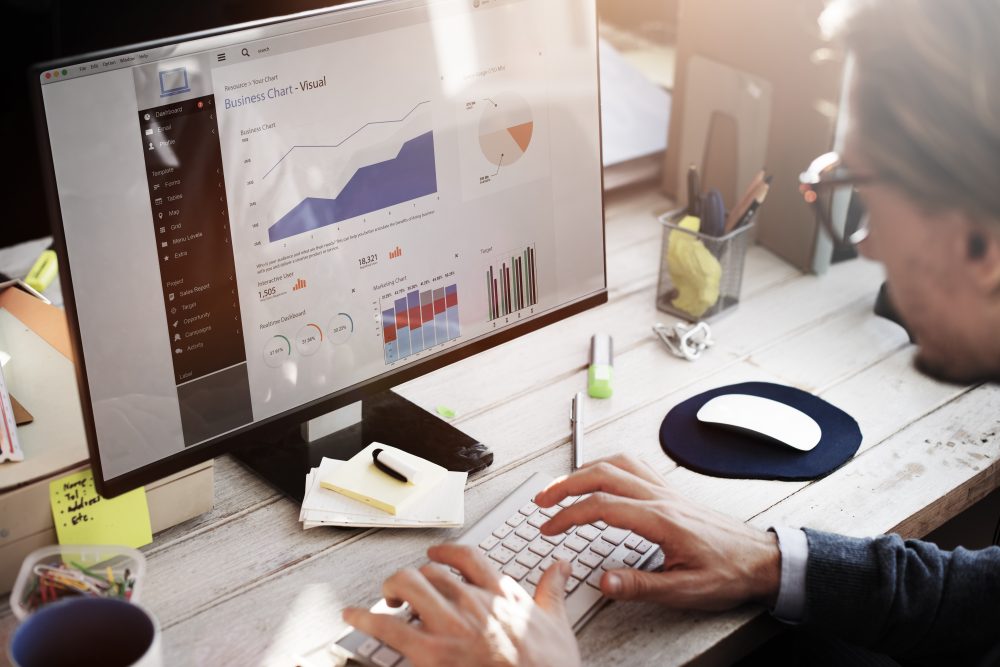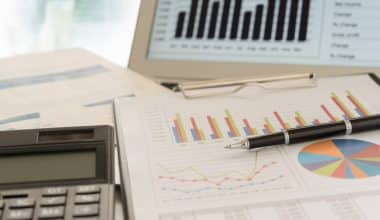By discovering patterns and trends in massive volumes of data, business analytics helps organizations make better decisions and enhance performance. Descriptive analytics is the most fundamental and extensively used type of analytics. It comes in handy when designing the KPIs and measurements that appear in business reports and dashboards. Descriptive analytics focuses on summarizing and identifying trends in current and historical data; which eventually assists businesses in understanding past events & happenings. It does not, however, attempt to explain the whys or to forecast what might occur in the future. In light of these, we will go over all you should know about the term, “Descriptive Analytics” ranging from its examples to the steps you should take in ensuring the best outcome.
Definition
Descriptive analytics is the evaluation of past data in order to better understand company trends. It also involves the effective utilization of a variety of historical data to create comparisons. The most often reported financial data, such as year-over-year pricing adjustments, month-over-month sales growth, the number of users, or total revenue per subscriber, are all descriptive analytics products. These metrics all indicate what happened in a company over a specific time period.
Understanding Descriptive Analytics
Descriptive analytics takes raw data and parses it to develop findings that managers, investors, and other stakeholders will find useful and intelligible. A report showing $1 million in sales may appear great, but it is devoid of context. It’s a cause for alarm if the figure represents a 20% month-over-month drop. If the gain is 40% year over year, it indicates that something is working well with the sales plan. However, to get a clear picture of the company’s sales success, you need to look at the bigger picture, which includes intended growth.
Descriptive analytics makes use of a wide range of data to provide an accurate picture of what has transpired in a company and how it compares to previous times. These performance measures can become a tool for identifying areas of strength and weakness. It, in turn, helps managers develop better management strategies.
Data aggregation and data mining are the two basic ways of collecting data for descriptive analytics. Data must first be obtained and then processed into usable information before it can be analyzed. Only then can company heads use the data to gain a better understanding of where the company stands.
Read Also: Stakeholder Analysis: Definitive Guide To The Stakeholder Analysis Process
What Can We Deduce from Descriptive Analytics?
Descriptive analytics gives crucial data on a business’s success and failures too. It allows firms to track their progress over time and compare their results to those of their competitors. Furthermore, it basically enlightens you on the following.
- Tracking real-time business performance. Businesses can track key metrics for individuals, groups, and the company as a whole. Descriptive analytics, for example, can measure sales per account representative, sales per product line, or the company’s overall sales revenue over time.
- Companies can monitor their success by comparing metrics from different time periods. Companies can, for example, calculate quarterly revenue growth as a percentage and display the historical trend in charts to assess sales growth.
- Busineses can use descriptive analytics to analyze the performance of different business segments using indicators like revenue per employee and expenses as a proportion of revenue. They can also compare their results to industry averages or publicly available data from other businesses.
How Is Descriptive Analytics Used?
Companies utilize descriptive analytics in many areas of their operations to assess how well they’re doing and whether they’re on track to meet their objectives. Marketing teams utilize descriptive analytics to evaluate indicators like conversion rates and social media followers to track campaign performance. Manufacturing companies keep track of things like production line throughput and downtime.
Other ways in which individuals use this type of analytics include;
#1. Reports:
Descriptive analytics generates the primary financial metrics found in a company’s financial statements. It also comes in handy in other typical reports to highlight specific aspects of business performance.
#2. Visualizations:
Using charts and other graphic representations to display metrics might help you explain their significance to a larger audience.
#3. Dashboards:
Executives, managers, and other staff can utilize dashboards to keep track of their progress and manage their daily tasks. Dashboards provide a selection of key performance indicators (KPIs) and other relevant data that businesses can personalize to their individual needs. To help individuals digest the information more quickly, it may often come in as charts or other visualizations.
Descriptive Analytics Examples

The following are some examples of descriptive analytics in the workplace, ranging from finance to production and sales.
- Revenue and expense reports, cash flow, accounts receivable and payable, inventory and production.
- Financial and other metrics of business KPIs are basic examples of descriptive analytics. These include measurements like the price-to-earnings ratio, current ratio, and return on invested capital, which are used to evaluate a company’s health and value.
- Descriptive analytics generates indicators like growth in followers, engagement rates, and income related to various social media platforms, which assist estimate the return on social media projects.
- It also creates summaries of internal and external survey results, such as a net promoter score.
Read Also: Credit Analysis: Guide to the Process & Ratios of Credit Analysis
Descriptive Analytics in Five Steps
Descriptive analytics usually begins with identifying the metrics you want to generate and ends with presenting them in the format you want. The processes for creating your own descriptive analytics are as follows;
#1. Identify the metrics you want to generate:
These should reflect the company’s or each group’s main business objectives. A growth-oriented company, for example, might track its quarterly increases in revenue while the accounts receivable group might track days of sales outstanding and other metrics that reflect how long it takes to collect money from customers.
#2. Determine what information is most important:
Find the data you’ll need to generate the stats you want. Data may be dispersed over several programs and files for some businesses. Companies that employ ERP systems, on the other hand, may already have the majority, if not all, of the information they require in their databases. External data sources, such as industry benchmarking databases, eCommerce websites, and social media platforms, may be required for some KPIs.
#3. Extract and prepare data:
If the data comes from numerous sources, extracting, merging, and preparing the data for analysis is time-consuming but a necessary step to ensure accuracy. This process may include data cleansing to remove inconsistencies and inaccuracies in data from various sources, as well as data transformation into a format that can be used by analysis tools. Data modeling is a procedure used in advanced data analytics to assist prepare, arrange, and organize company data. It is a framework for defining and formatting data in information systems.
#4. Analyze data:
Descriptive analytics can be applied using a range of technologies, ranging from spreadsheets to business intelligence (BI) software. The application of basic mathematical operations to one or more variables is common in descriptive analytics. Sales managers, for example, might wish to keep track of the average revenue per sale or the monthly revenue from new clients. Financial measures such as gross profit margin, which is the ratio of gross profit to sales, may be monitored by executives and financial specialists.
#5. Present data:
Finally, you’d need to present data in engaging visual representations, such as pie charts, bar charts, and line graphs, to make data easier to understand for stakeholders. However, certain people, such as financial experts, may prefer to have data presented in numbers and tables.
Conclusively
Descriptive analytics presents significant data in an easy-to-understand manner. Hence it will always be required. However, newer domains of analytics, such as predictive and prescriptive analytics, are receiving more attention.
These kinds of analytics combine descriptive analytics with extra data from other sources to estimate anticipated near-term outcomes. They do more than just provide data; they also help with decision-making and also providing strategies for maximizing positive outcomes while minimizing unfavorable ones.
But then, civilization is not yet in the position where all large enterprises will be run by beneficent and foresighted computers. People still rely on the same types of descriptive analytics used 10, 20, and 30 years ago to make the majority of decisions in offices and boardrooms around the world, such as whether sales were up or down compared to last month, is the product getting to market on time, and does the company have sufficient supply based on last month’s numbers.
What Is an Example of Descriptive Analytics?
The following are some examples of descriptive analytics in the workplace, ranging from finance to production and sales.
- Revenue and expense reports, cash flow, accounts receivable and payable, inventory and production
What Is Descriptive Analytics Used For?
Descriptive analytics gives crucial data on a business’s success and failures too. It allows firms to track their progress over time and compare their results to those of their competitors.
What Is the Difference Between Descriptive and Predictive Analytics?
Descriptive analytics answers the question “What happened?” in terms of a company’s operations, diagnostic analytics answers the question “Why did it happen?” and predictive analytics answers the question “What could happen in the future?”
What Are the 7 Analytical Methods?
The 7 Most Useful Methods and Techniques for Data Analysis
- Regression analysis.
- Monte Carlo simulation.
- Factor analysis.
- Cohort analysis.
- Utilizing cluster analysis
- Analysing time series
- Sentimental analysis
What Are 3 Descriptive Methods?
In descriptive research, there are three main ways to collect data:
- the observational method
- the case study method
- the survey research method.






